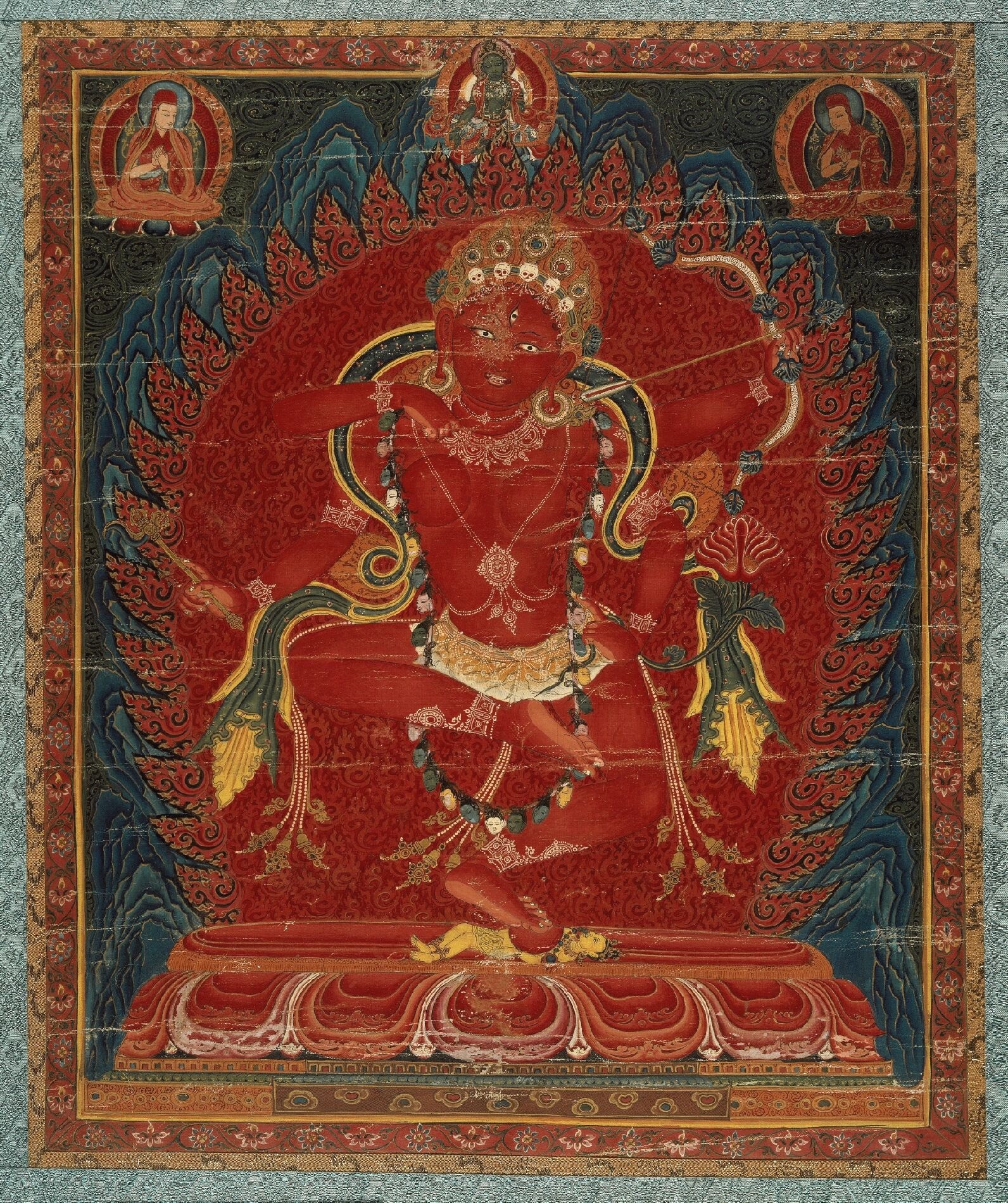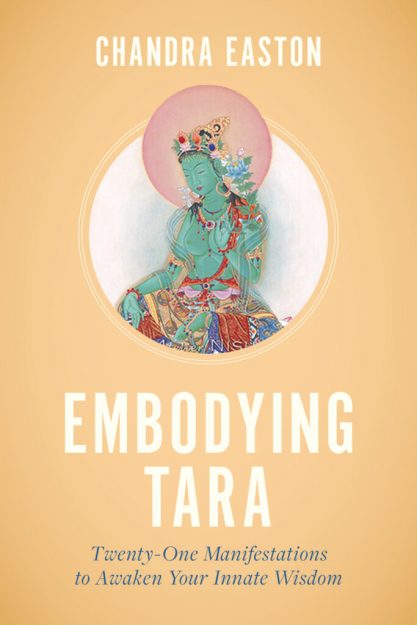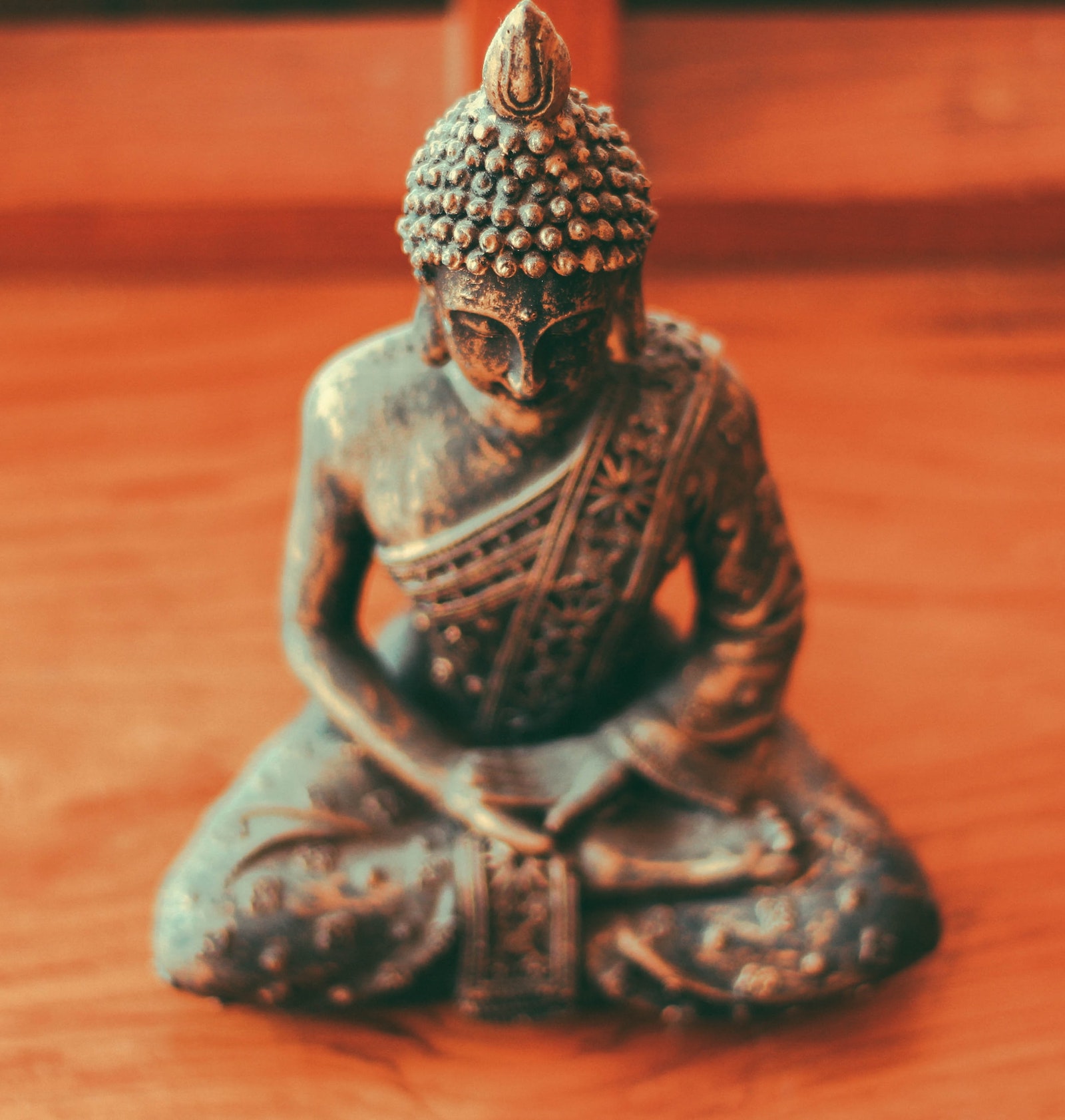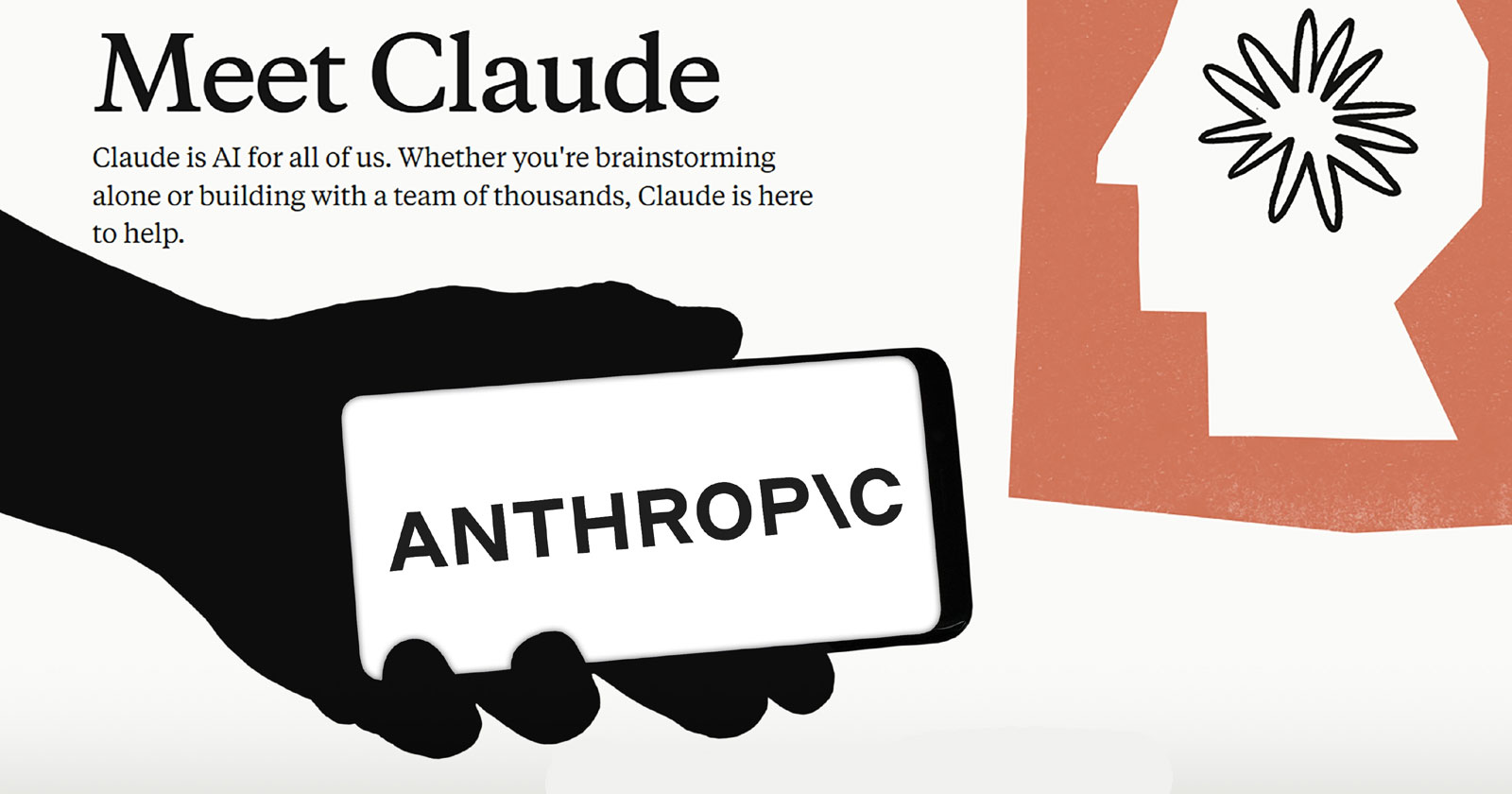Embodying Tara Aparajita
A Vajrayana teaching on the “Invincible Heroine” who dismantles injustice The post Embodying Tara Aparajita first appeared on Tricycle: The Buddhist Review. The post Embodying Tara Aparajita appeared first on Tricycle: The Buddhist Review.

In the Vajrayana tradition, the emanation of Tara is revered as a supreme goddess, female buddha, and savior figure. Like Avalokiteshvara, she is a deity of compassion who hears the cries of beings in samsara and helps them to “cross to the other shore.” In her book, Embodying Tara: Twenty-One Manifestations to Awaken Your Innate Wisdom, Buddhist teacher Dorje Lopön Chandra Easton shows us how to invite Tara’s awakened energy to come alive in our day-to-day life, through teachings, meditations, classic Buddhist insights, as well as entertaining real world analogues for Tara’s twenty-one different emanations. We hope this brief teaching will give you emboldened resolve and fortitude to be whichever Tara your situation calls for today.
Of the 21 manifestations of the goddess Tara, the eighth is Tara Aparajita, the “Invincible Heroine.” Dark red and fierce, her superpower is to dismantle and obliterate injustice. I like to call her Justice Tara because she protects beings from aggression, conflict, violence, and lawsuits. She is the go-to Tara for overcoming all forms of injustice: racial, social, gender, voting, labor, environmental—you name it.
In Sanskrit, aparajita means “unbeatable,” “unconquerable,” or “invincible.” In Tibetan, zhen migyalwai pamo literally means the “heroine (pamo) who is invincible by (migyalwai) others (zhen),” but a more concise translation is the “invincible heroine.”
In her praise, Tara Aparajita is honored as “Mother Ture, the great fearsome one, / Who annihilates Mara’s most powerful warriors.” Ture, which means “swift,” is another epithet for Tara as found in her mantra. She is said to be swift like the wind when in service to beings in need. Her “great fearsome” character signals that she is one of the fierce Taras in this pantheon. She takes no prisoners, she “annihilates Mara’s most powerful warriors,” and she is the “slayer of every foe.” But what does this mean?
Slaying Self-Clinging
Shakyamuni Buddha encountered Mara many times before and even after his enlightenment. Mara was the voice of Buddha’s psyche, expressing his doubt at various vital junctures on his path to enlightenment. Most notably, Mara appeared to the young Buddha-to-be, Prince Siddhartha, shortly after he set off on his spiritual quest, leaving behind his palace, royal status, wife, and young son. Mara tried to tempt the Buddha to abandon his search for freedom from suffering, promising him royal power and fame as a universal monarch if he were to turn back. But the prince recognized Mara for what he was—his own doubt—and said, “Mara, I see you.” In response, Mara vanished into thin air. On the eve of the Buddha’s enlightenment, Mara appeared again, but this time with his armies of warriors and beautiful daughters to disrupt the Buddha just before he achieved complete liberation. As before, Siddhartha recognized this assembly for what they were—apparitions of his own mind—and because of that, they faded away.
Maras, or “demons,” are thoughts, emotions, and physical states that block the experience of freedom in our lives. They include mental afflictions of ignorance, aversion, conceit, attachment, and jealousy. While these so-called demons feel real, the Buddha taught his disciples to consider them phantoms, illusions, or mirages that lack any substantial existence. Self-clinging or ego is the core mara that gives rise to the whole host of “Mara’s warriors,” meaning the myriad other mental afflictions. Liberation threatens the ego because it signals its imminent doom. When ego-clinging falls away through meditative insight or other peak experiences, we have the visceral experience of being a part of something greater than our individual identity. Often these insight experiences bring about the dissolution of the separate self and open us to the somatic experience of the universal self. It is as if the ceramic container of our ego shatters, and we realize that the space inside the container and the space outside the container are—and always were—the same. Separation was an illusion.
From Ego to Equality
By embodying Justice Tara, reciting her mantra, and resting in her wisdom, you allow her to reveal the unique ways you can free yourself from ego-clinging in order to be of service to others and support efforts toward equality and justice.
She can also help you to skillfully help free others of the mara of ego-clinging that is the root of all kinds of injustice. Take a journey with her and ask her how you might address justice and inequality. Even on a small scale, we can set an example for others with our integrity and fairness. If you are in a position of privilege, I would encourage you to find ways to help others who may not have those same advantages—speak out, march, advocate for anyone marginalized due to their race, gender, or religious beliefs. Perhaps volunteer to help secure voting rights for all citizens or advocate for the LGBTQ+ community. You might learn nonviolent communication skills to help resolve conflict more effectively or explore other methods such as restorative justice and therapies that help you speak your truths even in the face of adversity. Tara Aparajita guides us to act without expecting anything in return and to center those in need rather than focusing on ourselves. This is true dharma practice.
You can free yourself from ego-clinging in order to be of service to others and support efforts toward equality and justice.
Sometimes it is a great challenge to “love your maras” or, as the Bible says, “love your enemies,” in the context of injustice, oppression, violence, and the fear that comes from legitimate threats. Sometimes the snake is a snake, not a rope. Our fight-or-flight response is there for a good reason. It is right to stand up to injustice, feel righteous anger, speak out, or simply walk (or run) away. There are also times when we need the counsel of those who understand our rights and can help us advocate for them. Know when to seek that help. Other times we need to learn how to step out of the stress response that keeps us hypervigilant even when we don’t face a true threat—meditation can help us to see the mara as a mara or the rope as a rope. This is imperative for our health and well-being. Know when to put down the burden.
Pray to Tara Aparajita and ask for her protection and love. Embody her enlightened activity using visualization and embodiment meditation below.
Eighth Tara: Tara Aparajita Embodiment Meditation
Before you begin, recall the three samadhis of emptiness, compassion, and the union of the two. Remember that all appearances of self and deity are empty of intrinsic existence yet manifest as ceaseless compassion.
Settle into a comfortable meditation seat and take nine relaxation breaths, breathing into any physical tension, then any emotional tension, and finally any mental tension and releasing it all with your exhalations.
Front Visualization
Imagine that from luminous empty space Tara Aparajita appears in the space in front and slightly above you, dark red and fierce. With compassion as swift as lightning, she annihilates all illusions. Her fierce, loving power resolves conflict, injustice, violence, and lawsuits. Upon her lotus is a vajra blazing with flames of wisdom. She is surrounded by numerous wisdom beings.
Recite the Refuge and Bodhicitta Prayer (3 times)
Nāmo
Noble Tara, the essence of all refuges,
you liberate beings from fear and suffering.
I take refuge in your vast, loving compassion.
In order to bring all sentient beings to the state of
enlightenment,
I generate the twofold bodhicitta of aspiration and action.
Self-Visualization
Sound Tara’s seed syllable TĀṂ three times.
First TĀṂ: Imagine that your body becomes Tara Aparajita, dark red and fierce. Your body is luminous and hollow, with the tāṃ in your heart center.
Second TĀṂ: As Tara Aparajita, send offerings of rainbow wisdom light to the wisdom beings. Let yourself truly sense this connection between you and them.
Third TĀṂ: Wisdom beings send rainbow wisdom light back to you, empowering you as Tara Aparajita, fully activating you. Truly feel what it would be like to be the awakened buddha Tara Aparajita, a being of radiant light and infinite love and capacity.
Mantra Recitation and Enacting Tara’s Enlightened Activity
As you recite the mantra, imagine the TĀṂ and the mantra garland at your heart emanate rainbow wisdom light in all directions. This light and the wisdom flames from the vajra annihilate all illusions and resolve all conflict, including violence, arguments, and lawsuits.
OM TARE TUTTARE TURE DAHA PACHA HUNG PHAṬ SVAHA
Recite the mantra as many times as you like—but at least 21 times. Genuinely feel yourself as Tara Aparajita.
Dissolution and Rest in Awareness
When your mantra recitation feels complete, dissolve the visualization: first the world and its inhabitants, then you as Tara Aparajita converging at the tāṃ in your heart center. Then everything becomes luminous emptiness.
Rest in spacious awareness—the vast, luminous, and wakeful nature of your own mind. Release into presence. When you are ready, return to your form as Tara Aparajita and feel yourself fully integrated with her. As you move about your day, recall the compassion and love of Tara Aparajita within and all around you. Close the session with a sense of gratitude to Tara and her blessings.
Dedication of Merit
Through this virtue, may I quickly attain the state of Noble Tara.
May I bring each and every being, without exception, to that state.
May all beings be healthy, free from suffering and its causes, and may they awaken to their true nature.
◆
Adapted from Embodying Tara: Twenty-One Manifestations to Awaken Your Innate Wisdom © 2023 by Chandra Easton. Reprinted in arrangement with Shambhala Publications, Inc. Boulder, CO.

 FrankLin
FrankLin 










![Trading Journal: 5 Most Efficient Ones Analyzed [2021]](https://www.dumblittleman.com/wp-content/uploads/2021/10/Best-Investment-Newsletter-8.png)






















